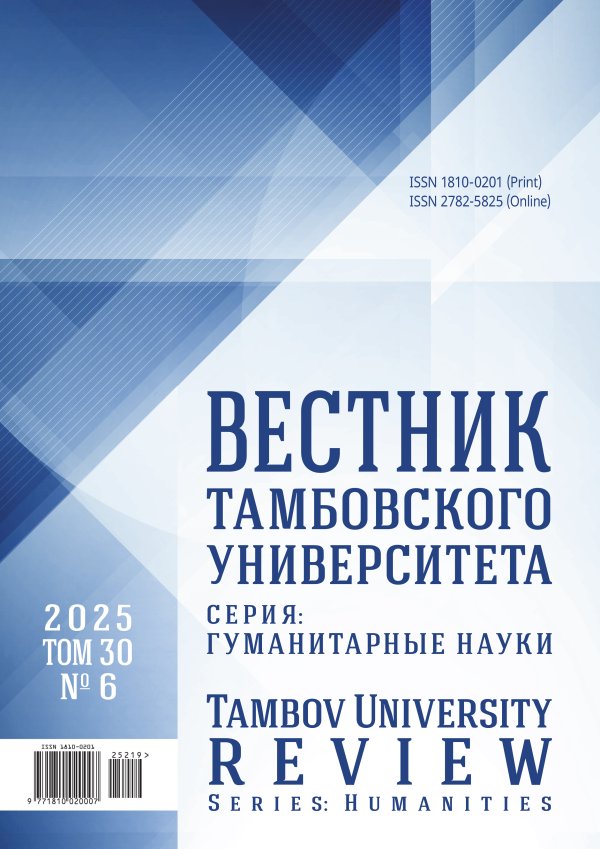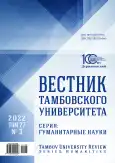Вырезки из газет со сведениями о положении русских военнопленных за 1918 г. как исторический источник
- Авторы: Лазаренко Е.И.1
-
Учреждения:
- ФГБОУ ВО «Брянский государственный университет им. акад. И.Г. Петровского»
- Выпуск: Том 27, № 3 (2022)
- Страницы: 780-793
- Раздел: ОТЕЧЕСТВЕННАЯ ИСТОРИЯ
- URL: https://bakhtiniada.ru/1810-0201/article/view/298253
- DOI: https://doi.org/10.20310/1810-0201-2022-27-3-780-793
- ID: 298253
Цитировать
Полный текст
Аннотация
Рассмотрена деятельность советской печати в 1918 г. по информированию общества о проблемах русских военнопленных в лагерях государств Четверного союза, реэвакуации домой и оказании им всесторонней государственной помощи. Актуальность исследования заключена в том, чтобы сравнить печатные издания Первой мировой войны, действовавшие в период правления Николая II, Временного правительства и советской власти, а также рассмотреть, как политика и идеология в отношении русских военнопленных отразилась на средствах массовой информации. Цель исследования основана на анализе вырезок из газет за 1918 г. Государственного архива Российской Федерации. В ходе исследования работ отечественных историков, печатных изданий времен Великой войны сделан вывод о том, что отношение к русским военнопленным царским руководством и советской властью были различными. В отечественной печати за 1914–1917 гг. крайне редко упоминались проблемы, связанные с русскими военнопленными, умалчивались массовые сдачи в плен и статистические данные о количестве военнопленных, томящихся в иностранных лагерях. Из-за отсутствия информации печатные издания в 1914–1915 гг. заимствовали статьи из иностранных газет. Складывается впечатление, что царизм забыл о своих соотечественников в плену. Зато местные газеты постоянно рассказывали о положении иностранных военнопленных в различных регионах и городах России. Вырезки из советских газет предоставили важную информацию, которую было трудно найти в других исторических источниках, показав социальную политику и идеологию в отношении русских военнопленных со стороны большевиков. Правительство во главе с В.И. Лениным пыталось всячески помочь оказавшимся в тяжелом положении военнопленным, освещая свою деятельность и судьбу военнопленных в газетах, тем самым добиваясь доверия у населения страны, чтобы заручиться поддержкой к молодому Советскому государству.
Об авторах
Е. И. Лазаренко
ФГБОУ ВО «Брянский государственный университет им. акад. И.Г. Петровского»
Автор, ответственный за переписку.
Email: lena.lazarenko.79@mail.ru
ORCID iD: 0000-0003-3918-011X
аспирант, факультет истории и международных отношений
241036, Российская Федерация, г. Брянск, ул. Бежицкая, 14Список литературы
- Черепенчук В.С. Российская периодическая печать времен Первой мировой войны как исторический источник // Вестник Русской христианской гуманитарной академии. 2015. Т. 16. Вып. 1. С. 169-177.
- Назарова Т.П. Периодическая печать о судьбе русских военнопленных в годы Первой мировой войны // Вестник Волгоградского государственного университета. Серия 4: История. Регионоведение. Международные отношения. 2014. № 5 (29). С. 32-38.
- Ливенцев Д.В. Турецкие военнопленные в Воронеже во время Первой мировой войны (на материалах газет «Воронежский телеграф» и «Воронежский день») // Рубежи истории. 2021. № 2 (14). С. 18-22.
- Ливенцев Д.В. Австро-венгерские и германские военнопленные в Воронеже во время Первой мировой войны (на материалах газет «Воронежский телеграф», «Дон» и «Воронежский день») // Рубежи истории. 2021. № 3 (15). С. 30-32.
- Руденков М.Б. Влияние присутствия в Новониколаевске солдат и военнопленных на криминальную ситуацию в 1917 г. по материалам газеты «Голос Сибири» // Приоритетные направления научных исследований: материалы Междунар. науч.-практ. конф. Саратов: Изд-во ЦПМ «Академия Бизнеса», 2018. С. 135-137.
- Гужва Д.Г. Военная периодическая печать русской армии в годы Первой мировой войны 1914–1918 гг. Новосибирск: Новосиб. высш. командное училище, 2009. 168 с.
- Суржикова Н.В. Коллизии уральского плена в зеркале региональной печати (1914–1917 гг.) // Проблемы отечественной истории: источники, историография, исследования: сб. науч. ст. Санкт-Петербург; Киев; Минск, 2008. С. 90-121.
Дополнительные файлы










